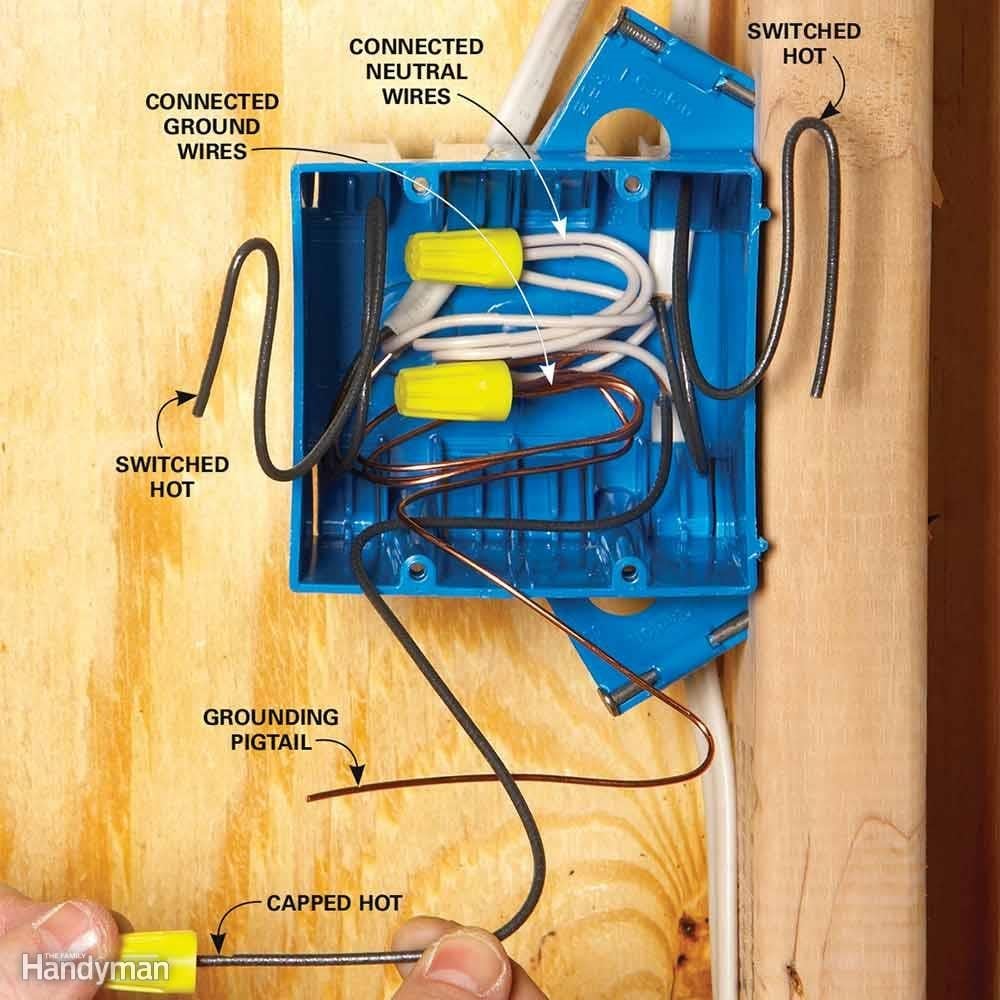Ontario Electrical Code Junction Box Attic

Always Disconnect the Power before beginning work! Failure to follow this rule can result in death or injury.Breaker and fuse panels remain hot even if the main breaker is turned off or the main fuse is removed. Main panels should only be worked on by qualified persons.Incorrectly performed electrical work can result in fire, damage to property, and injury or death to people. Furthermore, in some jurisdictions it may be against the law for anyone other than a licensed electrician to perform electrical work, and work which is performed by unqualified people or which has not been inspected and approved may cause your homeowners insurance policy to be void. Basic Residential Electrical Wiring Rough In and Codes GuideWhat are the basic residential wiring circuits? Can you put the hall plug on the same breaker as the dining room?
How many switches have to be in the stairwell? What size wire do you use for a dryer? How many amps can 12-2-WG take? All of these questions are answered somewhere in the 700 (more or less) pages of the National Electric Code. Luckily many of the most common residential wiring questions are answered right here on just a couple of pages. This is not intended to replace the NEC or the necessity to become familiar with the NEC. If you spot anything in this that you think is incorrect, please contact me at Required ElementsGuidelinesAre You Qualified?This article is not intended to be a complete guide on the subject of residential wiring, but only an aid to those who already have some knowledge on the subject.
I am not encouraging people with little or no experience to tackle a large wiring project (like wiring an entire house), and if that is your intent, then this is just the beginning of the information that you will need to safely and effectively accomplish such a task. There are many excellent guides available in print if you need more information.Disclaimer: Incompetent or improper wiring work can result in loss of life limb and property. Wiring which is not properly inspected may void your homeowners insurance.
In some areas it is not legal for anyone other than a licensed electrician to do wiring work at all. I am not a codes official. I am also not an expert on electrical wiring. I'm just a guy with some practical experience building and wiring houses. Furthermore, the code changes on a regular basis and is subject to local jurisdictions. If you are going to do electrical wiring, you should become educated about the code as it applies in your area.
Service EquipmentThe Service equipment (main panel, entrance conductors, meter base, and associated hardware) must be adequate to safely supply the required load. If you haven't already done so, you can use my to determine the size that you will need.The main service equipment panel shall be mounted either outside or inside the dwelling at the point of entrance of the service conductors to the building. All service equipment and electrical panels shall have a clear area 30' wide and 36' deep in front. This clear area must extend from floor to ceiling with no intrusions from other equipment, cabinets, counters, appliances, pipes, etc. Panels are NOT allowed in clothes closets or bathrooms.According to Article 250 of the NEC, the neutral in the main panel must be bonded to the service enclosure and the grounding electrode system. Also in the main service equipment, the neutral and equipment grounding conductors are bonded together; in sub-panels, the neutral is isolated from ground - this is to maintain a single point ground system and avoid a condition known as a ground loop.
Branch Circuits Guidelines. Do NOT mix different wire sizes on the same branch circuit. Type NM cable must be stapled within 12' of metal boxes, 8' of plastic boxes and every 4½ feet thereafter.
Proper connectors must be used where NM cable enters metal cabinets, boxes or panel boards. When Type NM cable is installed parallel to framing members, or in bored holes, it shall be located at least 1¼' from the nearest edge of the framing member, where nails or screws may penetrate the cables. If this distance cannot be maintained, the cable shall be protected by a steel plate or sleeve at least 1/16' thick. Section 300.4 (A), NEC. Cable or raceway-type wiring methods installed in a groove, to be covered by wallboard, siding, paneling, carpeting, or similar finish, shall be protected by 1/16-inch steel plate, sleeve, or equivalent, or must be recessed in the groove 1 1/4-inch for the full length of the groove in which the cable or raceway is installed. Exception: Raceways as covered in articles 342, 344, 352, and 358. Section 300.4 (E), NEC.Required Receptacles - Code Summary.

Ontario Electrical Code Junction Box Attic Box
For most areas of a house, receptacles must be no more than 12 feet apart and no more than 6 feet from a door or entryway - IE, every point on almost all walls should be no farther than 6 horizontal feet from a receptacle. The wall spaces formed by fixed room dividers, such as freestanding counters, or railings, are included in the six-foot measurement. Receptacles installed in the floor within 18' of the wall may be used in place of wall-mounted receptacles.